6 Best Grass Types for New Mexico
BY DANIELLE GORSKI | MAY 25TH, 2023 | NEW MEXICONew Mexico invokes images of deserts, majestic mesas, and prickly cacti. Most people don’t envision carpets of lush, emerald green grass unfolding across their lawn, but it is possible to maintain a healthy yard in New Mexico. The trick is choosing the best grass type for your New Mexico landscape.
Whether your new build needs a new lawn to go with it or your current lawn needs replacing, you need to find the right grass for your needs and landscape. Here’s a list of the 6 best grass types for New Mexico to help you get started.
In this article, we’ll cover:
Cool Season vs. Warm Season Grasses
There are two categories of turfgrass, cool-season and warm-season grasses. Both types perform well in New Mexico. Warm-season grasses grow best in the southernmost portions of New Mexico, while cool-season grasses grow best in central and northern cities.
Consider the traits of each grass type when choosing a turfgrass for your lawn:
Cool-Season Grasses
- Cool-season grasses remain green for most of the year.
- They are cold-tolerant, growing best in temperatures between 65 to 75 degrees Fahrenheit.
- Active growth season occurs in the early spring and fall.
- The best time of year to plant cool-season grass is in late summer or early fall.
- Cultivars go dormant during the summer and spring to life again in the fall.
Warm-Season Grasses
- Warm-season grasses prefer temperatures between 80 to 95 degrees Fahrenheit.
- They require less water than most cool-season varieties.
- Warm-season cultivars have a low frost tolerance and go dormant during the cooler months of fall and winter.
- The best time to plant warm-season grasses is in late spring or early summer during their active growing season.
6 Best Grass Types for New Mexico
Depending on the region of New Mexico, cool-season and warm-season grasses are both compatible with the Land of Enchantment’s arid environment.
1. Bermudagrass
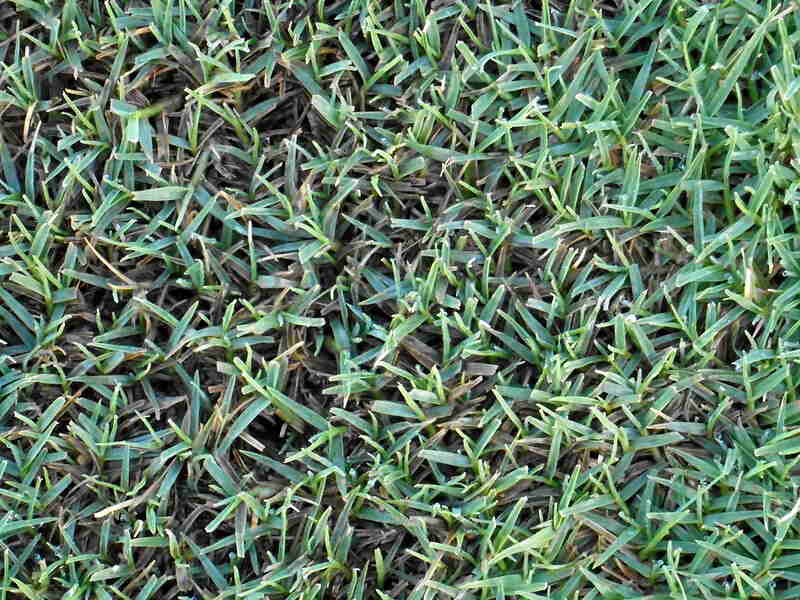
Photo Credit: Scot Nelson / Flickr / CC0 1.0
The most common grass type for New Mexico lawns is bermudagrass. It is an aggressive spreader, and some consider it a nuisance if its growth isn’t controlled. It is durable in droughts and high temperatures and grows rapidly, requiring regular maintenance.
Bermudagrass does not tolerate shade or cold, but stands up to heavy foot traffic and is often used in residential lawns, commercial properties, golf courses, and sports fields. Hybrid bermudagrass varieties have fine textures while common bermudagrass has a coarse texture.
Classification: Warm-season grass
Spreads by: Stolons and rhizomes
Shade tolerance: Poor — needs full sun
Drought resistance: High
Foot traffic tolerance: High
Maintenance needs: Needs frequent mowing due to fast growth rate; develops thatch easily; needs regular fertilization
Mowing height: 1-2 inches
Potential for disease: Good resistance to disease; prone to spring dead spot, dollar spot, leaf spot, large patch, and sheath spot
Potential for pests: Low resistance; prone to white grubs, hunting billbugs, mole crickets, armyworms, and sod webworms
Soil pH: 6-6.5
Soil type: Tolerates most soil types
Other notes: Bermuda spreads aggressively via its stolons (above-ground stems) and rhizomes (below-ground stems) and can out-compete many weeds. The downside is that it also can be a nuisance and is sometimes considered invasive. You’ll often find it has tunneled underground into flower beds and spread into neighboring lawns.
2. Buffalograss
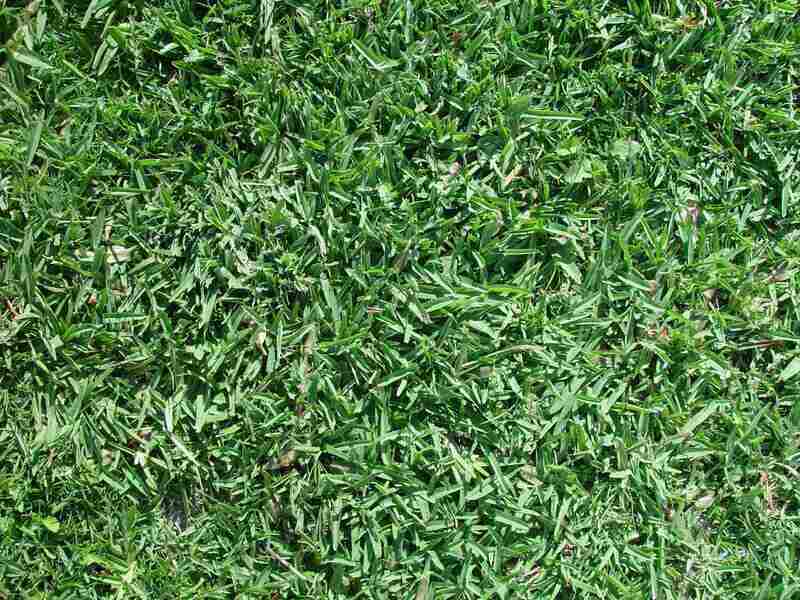
Photo Credit: Pixnio
Named after the bison who traverse the Great Plains, buffalograss is a fine-textured turfgrass with a rich, green color. It is one of North America’s native plants and has low watering needs. Buffalograss grows densely and is extremely low-maintenance. Cultivars are commonly found in public areas and around commercial properties.
Buffalograss doesn’t tolerate shade and requires full sun. It grows well in arid climates like New Mexico and withstands low annual rainfall. Unfortunately, buffalograss does not tolerate heavy foot traffic.
Classification: Warm-season grass
Spreads by: Stolons
Shade tolerance: Very low — best suited for full sun
Drought resistance High
Foot traffic tolerance: Very low, but light use or rare heavy use is OK
Maintenance needs: Low mowing frequency — once per week or less
Mowing height: 2-4 inches or leave unmowed
Potential for disease: Low; bipolaris leaf spot may occur
Potential for pests: Low; most common pests are mealybugs, buffalograss webworms, mites, short-tailed crickets, and chinch bugs
Soil pH: 6.5-7.5
Soil type: Native soils, not sandy soils
3. Fine Fescue
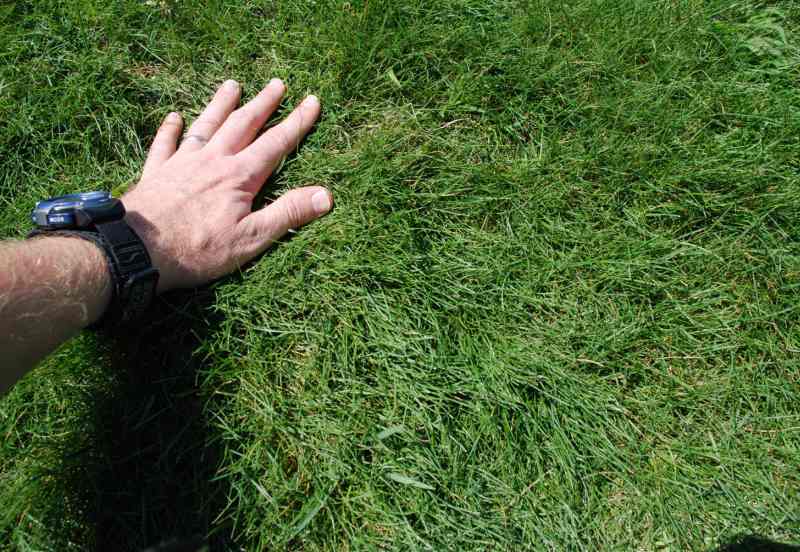
There are many varieties of fine fescue. Cultivars are very shade-tolerant, and the cool-season varieties thrive in northern New Mexico. Fine fescue isn’t a good choice for golf courses or sports fields, but it works well for residential properties that receive less foot traffic.
Fine fescue has a light green color and thin, needle-like blades. Although fine fescue germinates quickly, it is slow to establish and requires routine watering. Homeowners often mix fine fescue with other grass types to create a stronger turfgrass. Common mixes include Kentucky bluegrass, bentgrass, and perennial ryegrass.
Classification: Cool-season grass
Spreads by: Bunch-type grasses with one exception: creeping red fescues possess rhizomes
Shade tolerance: Moderate to high
Drought resistance: Moderate to high
Foot traffic tolerance: Low to moderate
Maintenance needs: Low
Mowing height: 1.5-3 inches
Potential for disease: Moderate; red thread, leaf spot, dollar spot, summer patch, powdery mildew, and downy mildew can occur
Potential for pests: Moderate; most common pests are chinch bugs, sod webworms, grubs, billbugs, winter mites, and crane flies
Soil pH: 5.5-6.5
Soil type: Well-drained soils; tolerates infertile and sandy soils
Other notes: Often used in a mix with other cool-season grasses, especially in sun/shade mixes
4. Kentucky Bluegrass
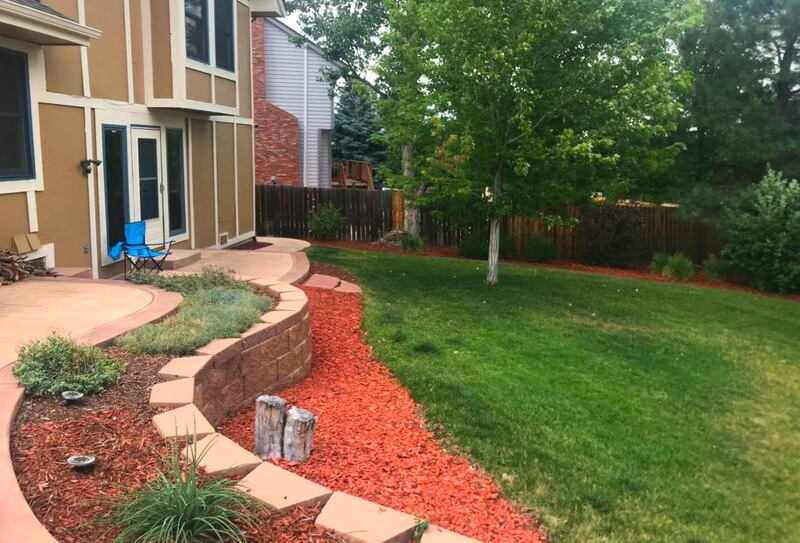
Photo Credit: Brenda Ryan / Wikilawn
As the most commonly used lawn grass in the United States, Kentucky bluegrass grows aggressively and quickly fills in sparse landscapes with its fine-textured blades. Kentucky bluegrass is self-repairing and resilient to heavy foot traffic while its carpet-like texture feels pleasant under bare feet.
The blue-green turfgrass isn’t a water guzzler, and its heat tolerance makes it a good choice for many regions. It might go dormant during a drought but bounces back quickly. Kentucky bluegrass can be mixed with other grass cultivars like tall fescue and perennial ryegrass to create a hardy, drought-resistant lawn.
Classification: Cool-season grass
Spreads by: Rhizomes
Shade tolerance: Low to moderate; prefers full sun
Drought tolerance: Moderate
Foot traffic tolerance: Low to moderate; recuperates well
Maintenance needs: Moderate
Recommended mowing height: 2-3 inches; mow taller during summer
Potential for disease: Moderate to high; snow molds, summer patch, leaf spot, fairy rings, dollar spot, and necrotic ring spot can occur
Potential for pests: Moderate to high; most common pests are chinch bugs, bluegrass billbugs, grubs, and greenbugs
Soil pH: 6-7
Soil type: Well-drained, fertile soils
Other notes: It is most often mixed with other species. Regular watering is necessary because of its shallow roots. Poor soil conditions and lack of water can cause diseases, but newer cultivars are more hardy and resistant to disease.
5. Tall Fescue
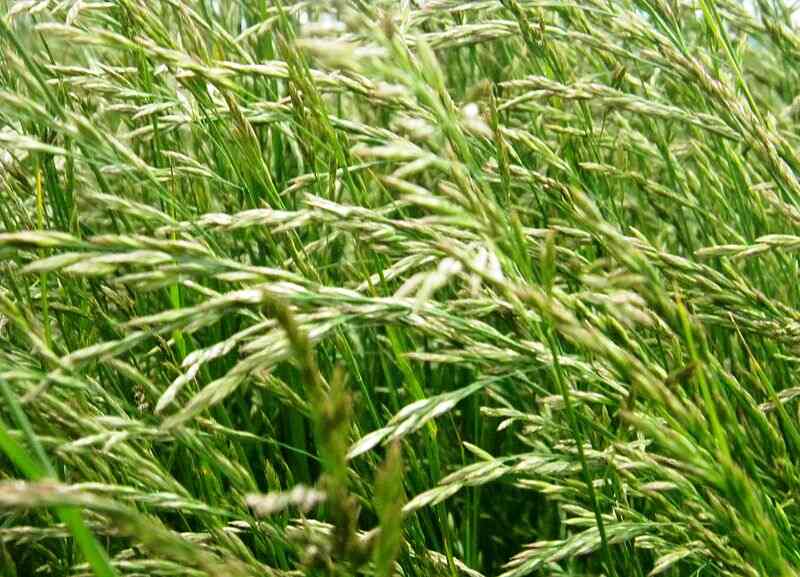
Photo Credit: Bildoj / Wikimedia Commons / CC BY-SA 3.0
Tolerant of both heat and drought, tall fescue is an excellent turfgrass for New Mexico. The dark green color, glossy texture, and broad blades add a bed of rich, green color to your yard, while its coarse texture stands up to heavy foot traffic. Although it prefers full sun, tall fescue can survive in partial shade, and the cool-season grass grows well from seed or sod, while its dense growth prevents weeds.
Classification: Cool-season grass
Spreads by: Tillers (Bunch-type)
Shade tolerance: Moderate to high
Drought tolerance: Moderate
Foot traffic tolerance: Moderate; recovers slowly
Maintenance needs: Moderate
Recommended mowing height: 2-4 inches (Check your cultivar and state recommendations. Many cultivars grow best when mowed on the tall side.)
Potential for disease: Low to moderate; can be prone to leaf spot, seedling disease, and brown patch
Potential for pests: Low to moderate; susceptible to armyworms, cutworms, sod webworms, and grubs
Soil pH: 5.5-6.5
Soil type: Adaptable; prefers clay soils
Other notes: Fertilize in September and November. Plant fresh grass seeds every couple of years to maintain a dense lawn and fill thinning spots.
6. Zoysiagrass
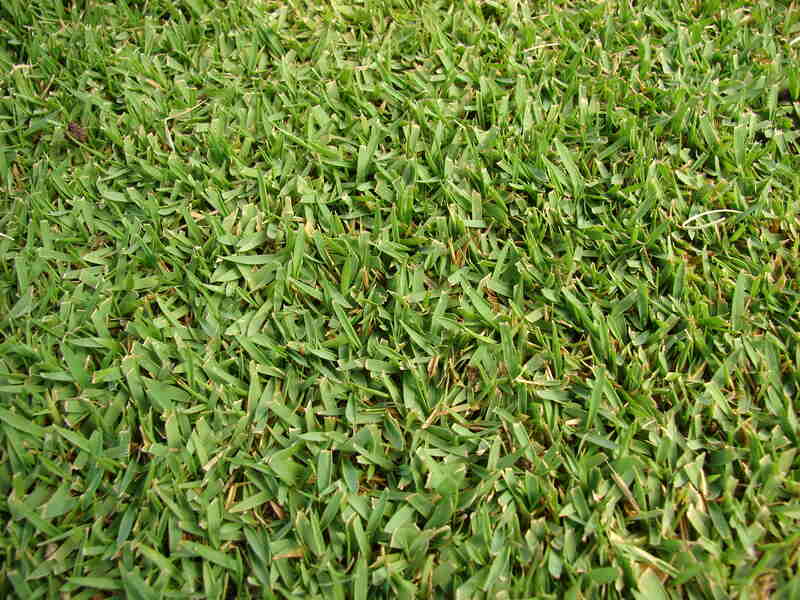
Photo Credit: Forest & Kim Starr / Wikimedia Commons / CC BY-SA 3.0
Thick, deep roots allow zoysiagrass to withstand heavy foot traffic and New Mexico’s blistering heat and arid climate. It is soft and gentle on bare feet, making it great for families and pets.
Zoysiagrass has a yellow-green color. It is fairly shade-tolerant, and its dense growth habit acts as a barrier against weeds. Zoysiagrass is slow to recover and establish, taking between one to three months.
Classification: Warm-season grass
Spreads by: Stolons and rhizomes
Shade tolerance: Tolerates light to moderate shade
Drought resistance: High
Foot traffic tolerance: High
Maintenance needs: Low to moderate nitrogen requirement; moderate mowing frequency
Mowing height: 1-2.5 inches
Potential for disease: Low; large patch, root decline, spring dead spot, rust, curvularia, and leaf spot can occur
Potential for pests: Low; most common pests are mites, grubs, mole crickets, hunting billbugs, armyworms, chinch bugs, and sod webworms
Soil pH: 6-6.5
Soil type: Well-draining, some cultivars more tolerant of a wide range of soils than others
Other notes: Moderately salt tolerant; cut with sharp mower blade; mow taller if grass is in partial shade
FAQ About New Mexico Grass Types
Sow cool-season turfgrasses in late summer or early fall. Aim to plant warm-season cultivars between April and June. No matter where you live in the Land of Enchantment, add sod installments to your New Mexico yard from spring to fall.
Fine fescue has high shade tolerance and is the best choice for shaded New Mexico lawns.
Bermudagrass and zoysiagrass have impressive wear tolerance.
Choosing Plant and Grass Varieties for Your New Mexico Landscape
Growing healthy grass in New Mexico is within your grasp. There is no single best grass cultivar for New Mexico landscapes. Consider the following factors:
- Sun exposure
- Local climate
- Soil type and pH
- Maintenance levels
- Watering capabilities
Personal considerations are also important. Some grasses offer a sparse, bunched appearance while others provide a lush, backyard carpet. Finding the right lawn grass will improve your home’s curb appeal and make you happy to spend more time outdoors.
Find a New Mexico lawn care pro near you. Wikilawn has trusted professionals in Albuquerque and many more cities across the Land of Enchantment.
Main Image Credits: Lawn, New Mexico / Nickmanpow / Wikimedia Commons / CC BY-SA 3.0